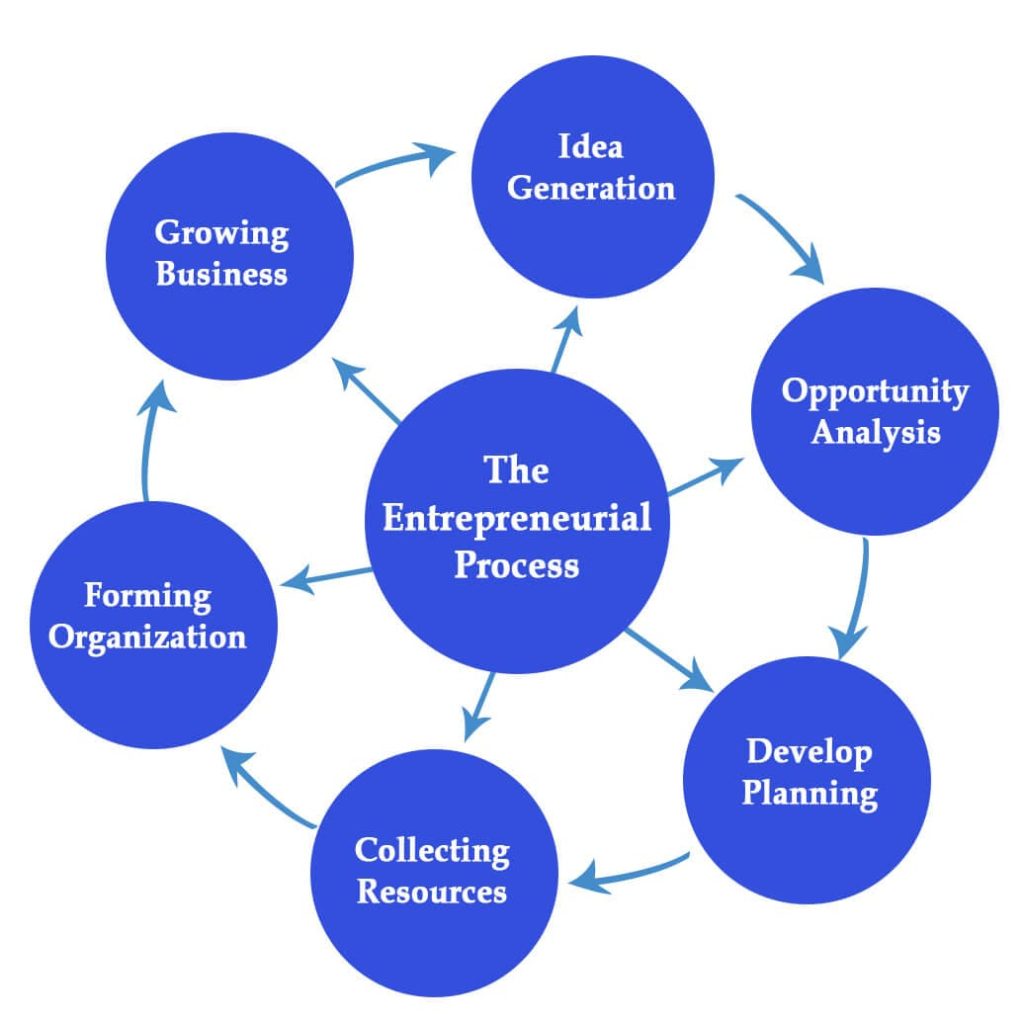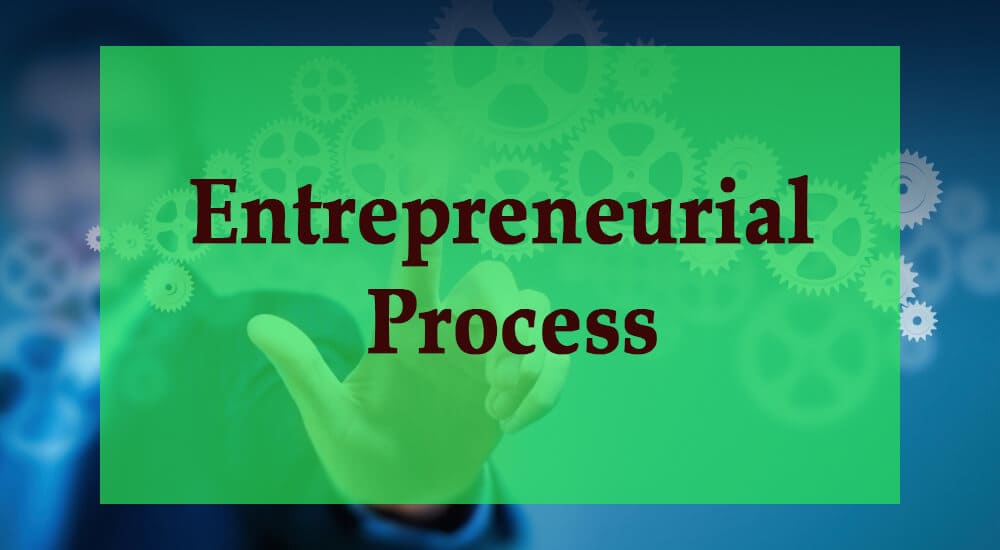Definition: The entrepreneurial process involves finding and analyzing opportunities and bringing resources together to achieve them.
Entrepreneurship is a continuous process.
The Entrepreneurial Process

- Idea Generation
- Opportunity Analysis
- Developing Planning
- Collecting Resources
- Forming Organization
- Growing Business
#1. Idea Generation
This is the first step in the entrepreneurial process. An idea can be a problem or solution. Here, the entrepreneur identified an idea worth pursuing. The entrepreneur will conduct the feasibility study and take input from other stakeholders.
#2. Opportunity Analysis
After identifying the opportunity, the entrepreneur will evaluate it. They will see if the opportunity provides any value to the business or the consumer, whether it will be sustainable in the long term if the profit is healthy, the market competition, the risks associated with the opportunity, and the entrepreneur’s product or service will be different or better than the competition.
The entrepreneur should look to answer for following questions:
- Is the opportunity worth investing capital, resources, and energy?
- Can we offer better solutions than existing ones?
- Can we beat the competition?
- Is the business sustainable in the long run?
- What are the risks?
If the answers are generally positive, entrepreneurs move to the next step.
#3. Developing Plan
After analyzing the opportunity, the entrepreneur develops a plan to realize it and launch the company. This is a crucial step in the entrepreneurial process. The plan will have a business strategy and operating structures, including steps for the formation of the company. It will provide details on business objectives, goals, mission statement, and details of products or services.
#4. Collecting Resources
Launching a new business requires resources, including financing, human labor, materials, and more. If the entrepreneur is self-sufficient, they can self-finance. However, they may go to investors or financial institutions to get the funds.
These days, entrepreneurs have a new option called crowdfunding. Using these platforms, entrepreneurs raise awareness about their business and ask for support.
If the idea resonates with the audience, businesses can quickly raise a significant amount.
#5. Forming Organization
Once the entrepreneur secures the funds and resources, they will launch the company and form a legal entity. The structure of the organization will depend on its requirements.
The entrepreneur will name the company and file the papers with the government to form LLC, WLL or PLC, Corporation, or a Non-profit.
#6. Growing Business
After launching the company, it will start producing products or offering services. The entrepreneur will ensure that the business is running smoothly and growing. Now the operating plan will be executed. The entrepreneur will have regular status updates and compare the actual progress with the planned progress. If things are not going as planned, they will take corrective actions to bring the progress on track.
Summary
Launching a business requires six steps; however, entrepreneurship is a continuous process. A robust entrepreneurial process ensures business functions without hassle, provides profit, and increases brand recognition.

Thank you
It was helpful 🤗🤗
I need references of books
Thanks 👍
Thank you 😊.
It helped a lot.
thanks
This was so helpful thank you
Thank u, it’s very interesting to mi as beginner
Thanks it was helpful
Much appreciated for this was so helpful to me as well.